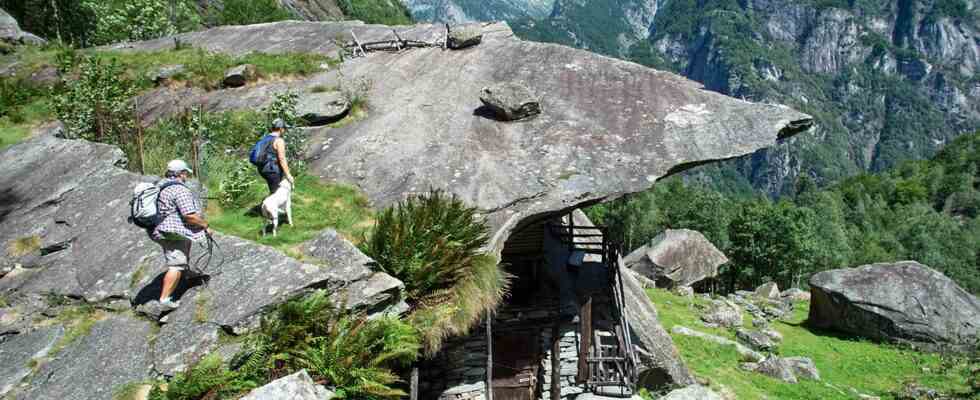It’s not so easy to drive a nail into the wall here: the rooms are made of solid rock walls, as are the ceilings. These alpine dwellings are not buildings made of wood or stone, but caves and grottos that were merely expanded by human hands.
This form of natural accommodation can be found throughout the Alps. Especially in higher-lying regions, they served as sheltered places to stay overnight, as pantries, workrooms for food production and as stables for animals.
This Costruzioni sotto rocciaconstructions under rock, as they are called in Italian, were created centuries ago and are not only considered examples of mountain architecture, but also document how skilfully the people of the Alps were able to exploit the geographical and geological conditions.
Especially in Ticino, in the side valleys of the Maggia Valley northwest of Locarno, you can still find these buildings hidden in the landscape, which often arose out of necessity and were cared for and developed over generations: the Splüi, as they are called there. The term Splüi probably comes from Latin spelunca for cave.
On the following page of the photo series we give an insight into a Splüi that was inhabited until the 1980s.
You can also click through the following photo series:
– Trekking in Ticino, Part 1: Above Lugano’s local mountain: This is how it hikes on the Scenic Trail
– Trekking in Ticino, part 2: Monte Lema and Monte Tamaro: on the mountain trail with the most views in southern Switzerland
– Trekking in Ticino, part 3: A sliding village and hot springs from below: Hiking from the Centovalli to the Rovana Valley
– Trekking in Ticino, Part 4: Between heaven, water and earth – hiking from Airolo to the upper Valle Maggia

